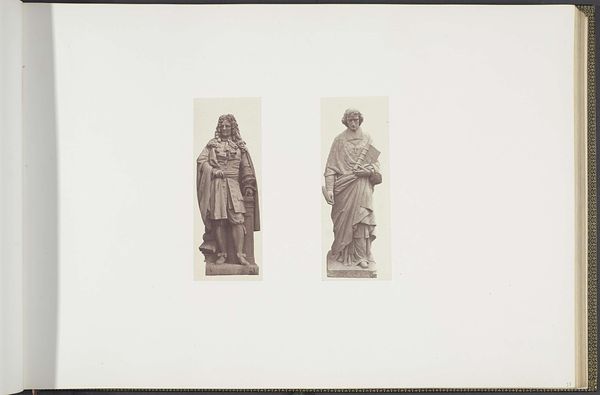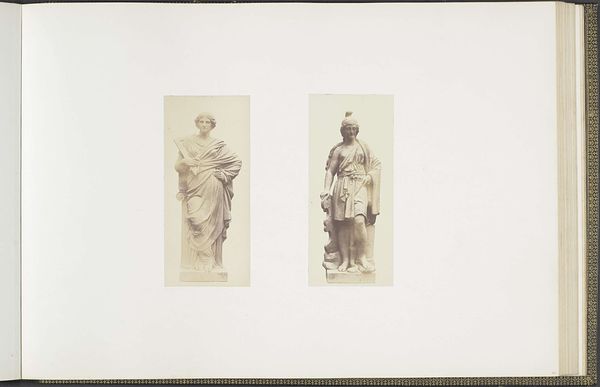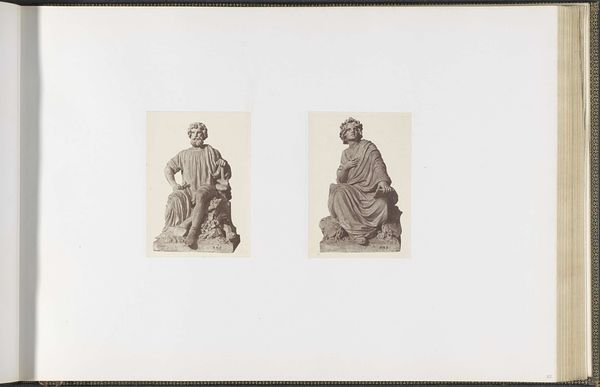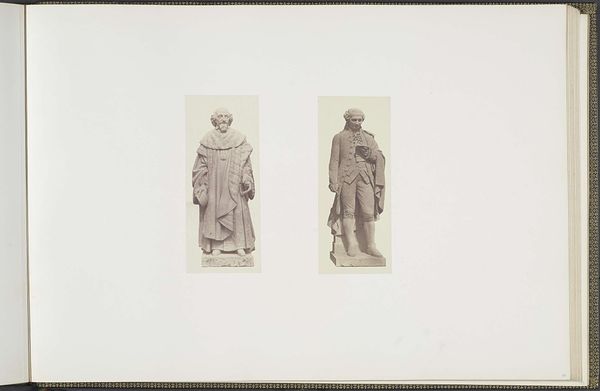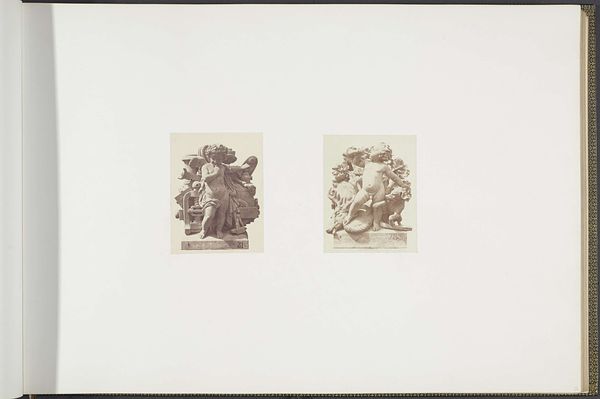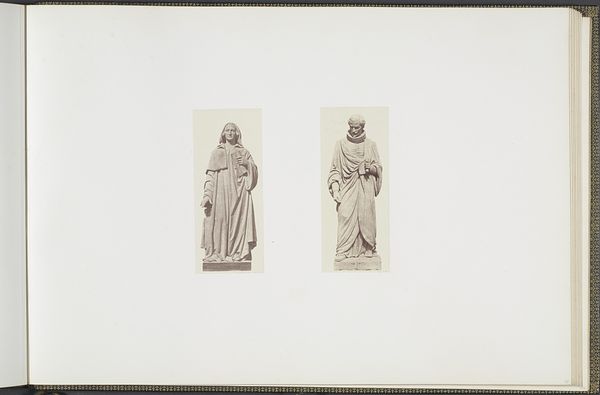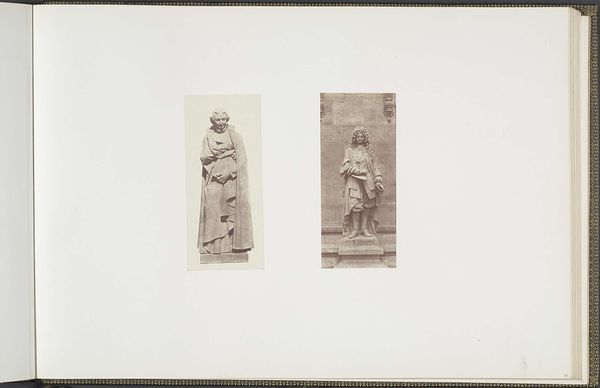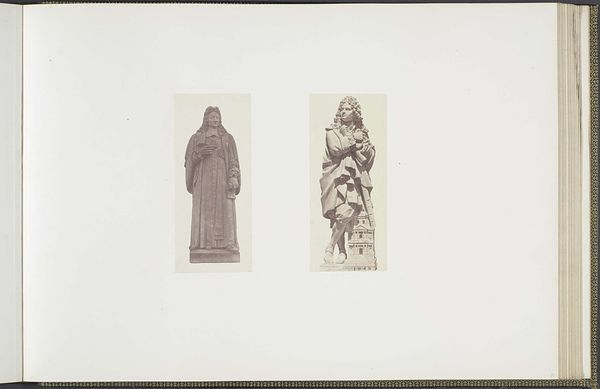
Gipsmodellen voor beeldhouwwerken op het Palais du Louvre: vlnr "Le Calme", "La Religion"en "La Méditation" door Jean Bonassieux c. 1855 - 1857
0:00
0:00
edouardbaldus
Rijksmuseum
print, photography, sculpture
#
portrait
#
neoclacissism
#
allegory
# print
#
classical-realism
#
photography
#
sculpture
#
history-painting
#
academic-art
Dimensions: height 378 mm, width 556 mm
Copyright: Rijks Museum: Open Domain
Edouard Baldus created this photograph of plaster models for sculptures destined for the Palais du Louvre. The three figures represent "Calm," "Religion," and "Meditation" by Jean Bonassieux. Baldus was a master of architectural photography, often commissioned to document public works during France’s Second Empire. Photography in the 19th century became a tool that served colonial and patriarchal structures, reinforcing the cultural values of Western civilization. Here, the sculptural figures are allegorical representations of idealised concepts. They embody a Western philosophical tradition rooted in reason and order. Note how each figure adopts poses of contemplation. They appear to suggest a narrative of intellectual and spiritual superiority. The Palais du Louvre, originally a royal palace, would eventually become a museum, thus transitioning from a symbol of power to one of culture and education, as defined by those in power. Consider how these sculptures and Baldus's photograph reflect the cultural aspirations and the societal values of 19th-century France. What is included and what is excluded?
Comments
No comments
Be the first to comment and join the conversation on the ultimate creative platform.


